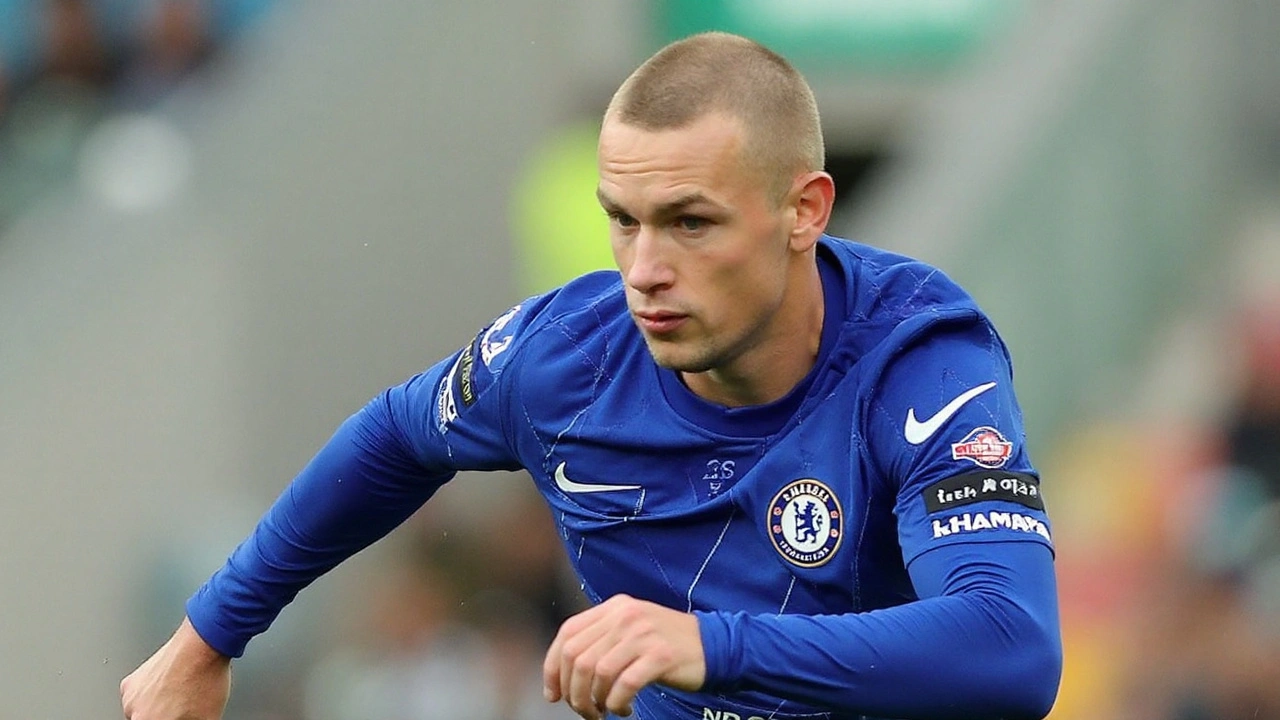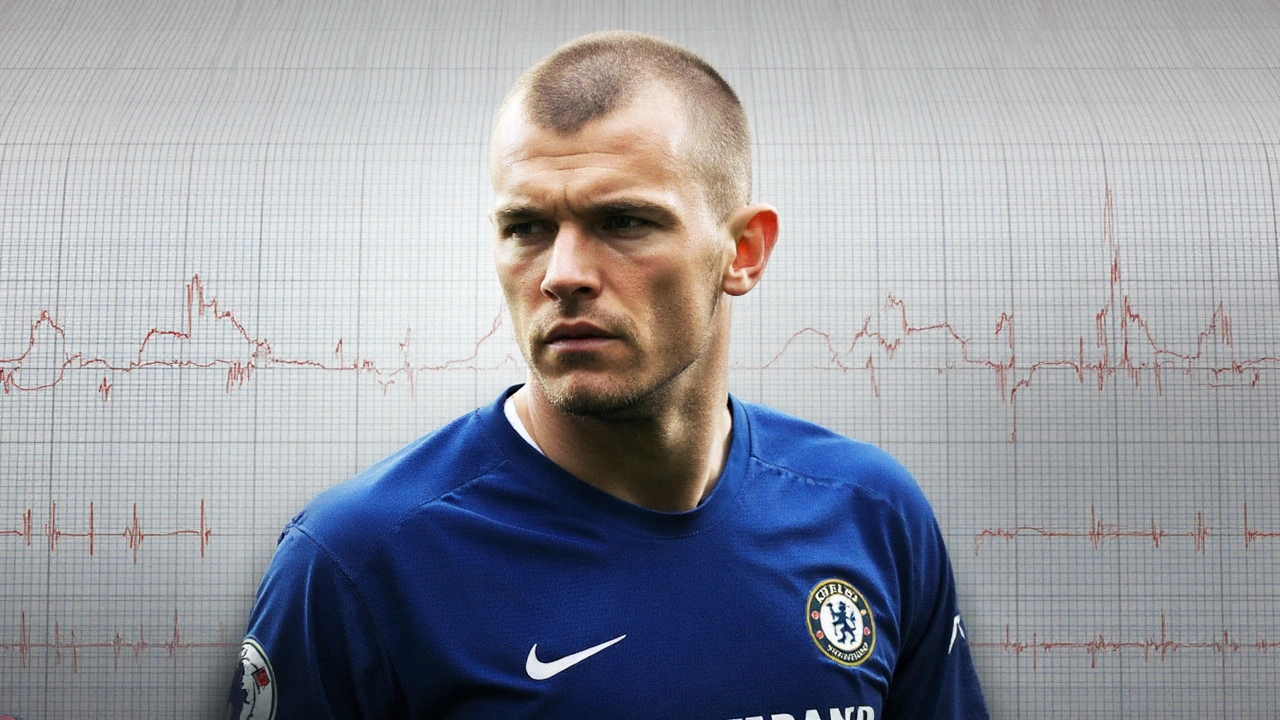The case so far
Mykhailo Mudryk has reportedly passed a lie detector test as he fights a doping charge that has kept him out since November 2024. The Chelsea winger tested positive for meldonium while on international duty with Ukraine and has been provisionally suspended ever since. If the violation is confirmed, he could face a four-year ban. He says he never knowingly took a banned substance.
The polygraph result won’t decide the case on its own. In anti-doping matters, lie detector tests are not formal evidence. But they can support a player’s narrative while lawyers build the core defense: where the substance came from, how it entered the body, and whether there was intent. Ukrainian journalist Igor Burbas has said a stem cell injection Mudryk received with the national team may explain the result. If that treatment was contaminated or contained a prohibited compound without proper clearance, it could form the backbone of a “no significant fault” argument.
Meldonium has history. WADA banned it in 2016 after finding widespread use for endurance and recovery. It’s a heart medication, common in parts of Eastern Europe. Early in 2016, labs struggled with detection windows, and WADA later issued guidance for low concentrations that might indicate older use. None of that changes the rule today: if it’s in your system, you need a valid medical exemption. Without one, you’re in trouble unless you can prove how it got there and that you weren’t careless.
The process has been slow. First comes the A-sample finding, then the athlete can request the B-sample test. That step usually confirms the result, but it’s still a formal right. After that, the case moves to a hearing. Because the sample was taken during international duty, jurisdiction can involve the national federation and the relevant anti-doping body overseeing that competition. Hearings, expert reports, and lab questions often push timelines into many months. Mudryk’s camp has kept details tight while the clock keeps ticking.
During the suspension, Mudryk has been kept away from Chelsea’s Cobham base, though the club set a fitness plan to maintain condition. His last appearance came in early December, when he scored in a 2-0 win over Heidenheim in European competition, and he was last named in a squad for a 3-0 win over Aston Villa on December 1, 2024. Updates have been scarce since, beyond reports of the polygraph and the medical-treatment angle now being explored.

What it means for Chelsea — on and off the pitch
On the football side, Chelsea moved to protect themselves on the wings during his absence, with reports of additions including Alejandro Garnacho and Jamie Gittens. That’s about covering minutes and keeping a competitive edge while Mudryk’s status remains unresolved. Squad planning is ruthless at the top level: if a player is unavailable indefinitely, you buy or promote someone who is.
The business side is messier. The club’s “€30m worry” reflects the risk around a big asset sidelined for a long stretch. Transfer fees are amortized over contracts, so any lengthy ban affects both on-pitch value and the balance sheet. Wages, insurance, and potential clawback clauses depend on the exact contract language and league rules. In some cases, clubs can withhold pay during suspensions; in others, it’s more complicated and may trigger grievances or negotiations.
For Mudryk, the hearing will hinge on three questions: what the lab found, how it got there, and how careful he was. If the stem cell injection is the source, can the team produce records, batch numbers, and expert testimony that show contamination or a misstep in medical oversight? Was there any attempt to secure a Therapeutic Use Exemption? Paper trails matter. So do pharmacokinetics: timing, concentration, and metabolite profiles can help reconstruct events.
Possible outcomes range widely, and the wording of the decision will matter as much as the length of any sanction:
- No violation: if the panel is convinced by the evidence or finds a testing/procedural flaw.
- Reduced sanction: if there’s proof of contamination or no significant fault, a ban could drop to months rather than years.
- Full sanction: up to four years if intent or significant negligence is found.
- Backdating: time already served under provisional suspension can count toward any final ban.
There’s also the appeals path. If either side disagrees with the verdict, they can seek review, often at the Court of Arbitration for Sport. That adds months. For Chelsea, that means keeping contingency plans alive and the market options open. For Mudryk, every week of uncertainty chips away at rhythm and confidence, even with private training.
What’s next? A hearing date and a decision timeline. Until then, the polygraph result sits where it belongs: as a supporting note, not a verdict. The case will be decided by documents, lab data, medical evidence, and how convincingly his team explains a banned substance in his system. If he clears his name, he returns with a point to prove. If not, Chelsea’s €30m worry becomes a much larger problem.

Cheryl Dixon
September 20, 2025 AT 19:40A lie detector won’t clear the case, but at least it shows he’s not playing games.
Charlotte Louise Brazier
September 20, 2025 AT 21:03Honestly, the polygraph is just a piece of the puzzle. Even if Mudryk passed, the anti‑doping panel still needs solid evidence of where that meldonium came from. Chelsea’s €30m anxiety is understandable; they’ve sunk a lot into a player who can’t contribute on the pitch right now. Still, it’s crucial the club respects the athlete’s rights while protecting its own financial health. In the end, the due‑process machinery will decide, not the media hype.
Donny Evason
September 20, 2025 AT 22:26The stem‑cell injection angle is interesting because it opens a loophole for contamination claims. If the treatment was administered under the national team’s medical staff, there should be batch records and a chain‑of‑custody that can be examined. WADA’s guidance on low‑level meldonium detection means the concentration matters as much as the presence. A ‘no significant fault’ defense could hinge on proving that the substance entered Mudryk’s system unintentionally, perhaps via a tainted supplement. Regardless, the B‑sample will be the next decisive step.
Phillip Cullinane
September 21, 2025 AT 04:00From a sports‑law perspective, this case illustrates the intricate intersection of medical ethics, contractual obligations, and anti‑doping jurisprudence. First, the presence of meldonium-though detected at a low concentration-triggers the provisional suspension protocol under the World Anti‑Doping Code, which obliges the athlete to cooperate fully with the testing authority. Second, the alleged stem‑cell injection raises the specter of inadvertent contamination, a scenario that has precedent in previous sanctions where the adjudicating panel granted reduced periods of ineligibility. To substantiate such a claim, Mudryk’s team must furnish comprehensive documentation: injection logs, product batch numbers, and expert testimony on pharmacokinetics, demonstrating that the prohibited substance entered his system as a by‑product rather than a deliberate intake.
Simultaneously, Chelsea faces a balance‑sheet conundrum. The €30 million fee is amortized over the length of his contract, meaning each month of suspension erodes the club’s projected asset value. Insurance policies may cover a portion of salary during a doping ban, but policy language often excludes intentional violations, creating a gray area that the club’s legal counsel must navigate. Moreover, contractual clauses-such as performance‑related bonuses and potential clawback provisions-could be triggered depending on the final sanction length, further complicating negotiations.
Procedurally, the timeline will likely unfold as follows: the B‑sample analysis, a hearing before the national anti‑doping organization, possible submission of a mitigation dossier, and finally a decision that could be appealed to the Court of Arbitration for Sport. Each stage adds weeks, if not months, to the overall resolution period. During this window, Mudryk remains barred from official competition, albeit allowed private training at Chelsea’s facilities, preserving his physical condition but not his match sharpness.
In terms of precedents, we can look at the 2019 case of a German sprinter who claimed contamination via a therapeutic injection; the panel reduced the sanction to six months after accepting the contamination argument. Conversely, the 2022 case of an Italian cyclist who was found to have knowingly consumed a banned stimulant resulted in the maximum four‑year ban. Mudryk’s outcome will hinge on the credibility of the medical evidence and the rigor of his legal team’s argumentation.
Ultimately, whether the panel issues a full sanction, a reduced term, or an exoneration, the ramifications extend beyond Mudryk’s personal career. Chelsea must reassess squad depth, potentially accelerate alternative signings, and manage fan expectations amid the uncertainty. The broader lesson for clubs is the importance of stringent medical oversight and proactive Therapeutic Use Exemption applications to mitigate similar risks in the future.
Janie Siernos
September 21, 2025 AT 05:23Skipping ethical shortcuts is non‑negotiable; athletes must uphold integrity, and clubs should enforce zero‑tolerance policies on doping, even when contamination defenses are invoked.